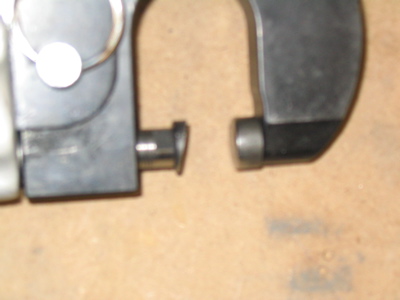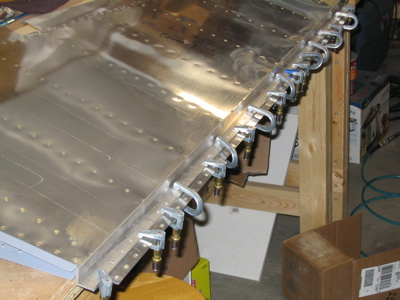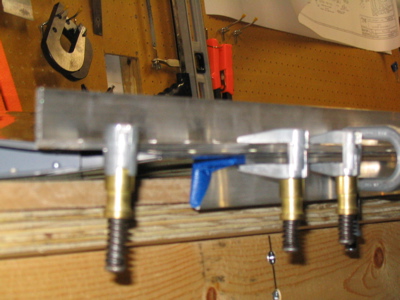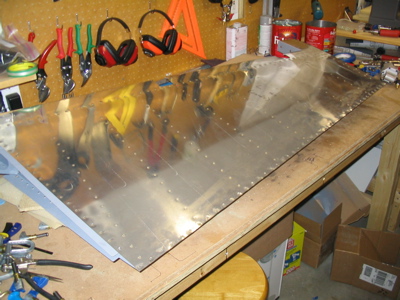Riveting the trailing edge of the rudder is one of those tasks that I've been dreading – not just because of all the horror stories, but also because you can tell just by looking at the plans that this part sucks. The goal is to get the trailing edge of the rudder to a) come out straight, and b) have as little waviness to it as possible.
The manual lays out a procedure for doing this that involves the back rivet set – other builders have had success with different methods involving the use of the pneumatic squeezer (1, 2). I started out by grinding one of my flat rivet sets to an angle that matches the trailing edge of the rudder:

Then I clamped angle stock to both sides of the trailing edge, just forward of the rivet line. Using two flat sets in the squeezer, I worked from the center out, setting each rivet about halfway.

You can't see it here, but I put each rivet in from the opposite direction as its neighbor. I figured that would help balance out any tendency for the riveting process to want to bow the trailing edge in one direction or the other.

At this point, everything was going great. Then I switched to the special angled squeezer set with the intention of finishing the process of squashing the shop heads of the rivets until they were flush with the skin. It didn't turn out as nice as I'd hoped – not only did the shop heads not get set all the way flush, but the act of clamping down on the trailing edge with the squeezer caused some "pillowing" of the skin between each rivet. After finishing this process, looking the rudder over, and saying some bad words, I got out my back rivet plate and mushroom set, and went over all the rivets again until they were all perfectly flush.
You can't see the details very well in this photo, but here it is:

It turned out to be almost perfectly straight overall (only about a tenth of an inch deviation along its entire length) but it does have some pillowing and a slight amount of waviness between successive rivets. I think it will look okay after it's painted, though, and at least it's aerodynamically acceptable. I now know that setting the rivets partway with the squeezer and then finishing with the rivet gun is probably the best way to go. Oh well, the rudder trailing edge on my next airplane will be perfect. Or, I may re-skin this rudder some day if I have some downtime. I am glad that I put in each rivet in alternating directions, and I'm fairly pleased with the way the shop heads of the double flush rivets turned out. When it's painted you might not even be able to tell which side is the manufactured head and which is the shop head.